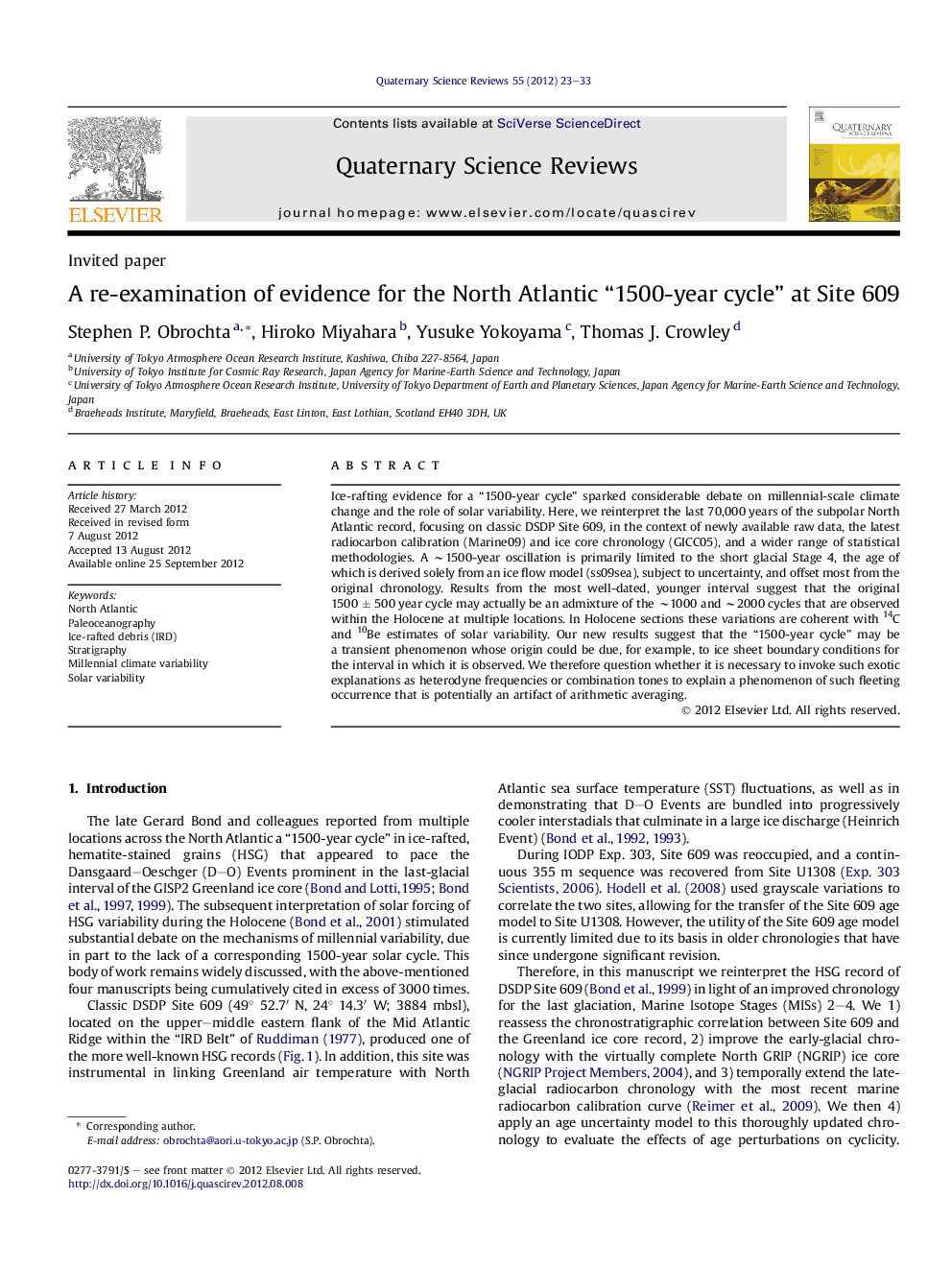| کد مقاله | کد نشریه | سال انتشار | مقاله انگلیسی | نسخه تمام متن |
|---|---|---|---|---|
| 4737181 | 1640879 | 2012 | 11 صفحه PDF | دانلود رایگان |

Ice-rafting evidence for a “1500-year cycle” sparked considerable debate on millennial-scale climate change and the role of solar variability. Here, we reinterpret the last 70,000 years of the subpolar North Atlantic record, focusing on classic DSDP Site 609, in the context of newly available raw data, the latest radiocarbon calibration (Marine09) and ice core chronology (GICC05), and a wider range of statistical methodologies. A ∼1500-year oscillation is primarily limited to the short glacial Stage 4, the age of which is derived solely from an ice flow model (ss09sea), subject to uncertainty, and offset most from the original chronology. Results from the most well-dated, younger interval suggest that the original 1500 ± 500 year cycle may actually be an admixture of the ∼1000 and ∼2000 cycles that are observed within the Holocene at multiple locations. In Holocene sections these variations are coherent with 14C and 10Be estimates of solar variability. Our new results suggest that the “1500-year cycle” may be a transient phenomenon whose origin could be due, for example, to ice sheet boundary conditions for the interval in which it is observed. We therefore question whether it is necessary to invoke such exotic explanations as heterodyne frequencies or combination tones to explain a phenomenon of such fleeting occurrence that is potentially an artifact of arithmetic averaging.
► The last glacial chronology of DSDP Site 609 is updated to Marine09 and GICC05.
► Hematite stained grain cycles occur primarily at 1000- and 2000-year intervals.
► Variability is consistent with Holocene cosmogenic nuclide oscillations.
► 1500 is likely an artifact of arithmetic averaging with little statistical justification.
Journal: Quaternary Science Reviews - Volume 55, 8 November 2012, Pages 23–33